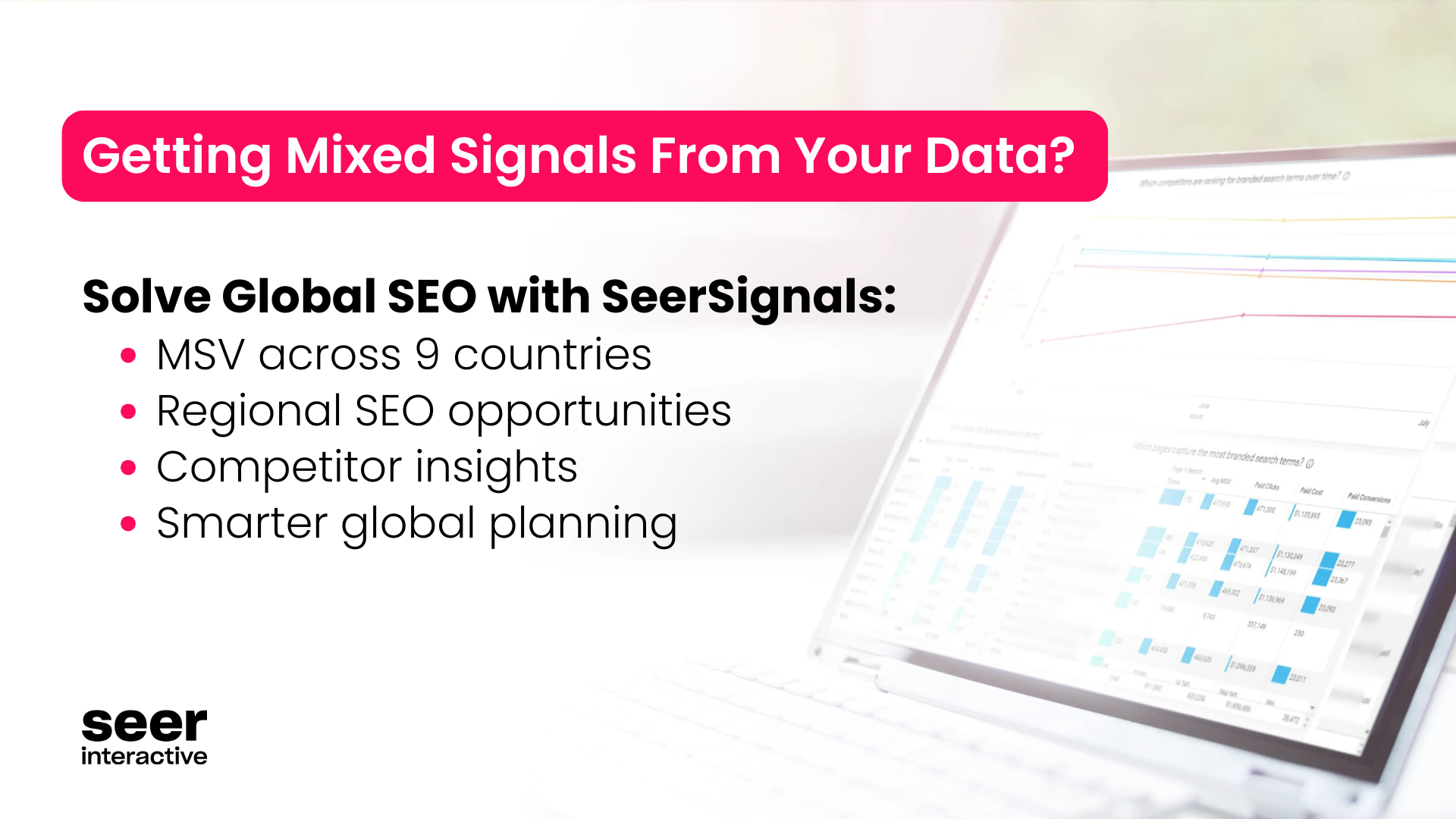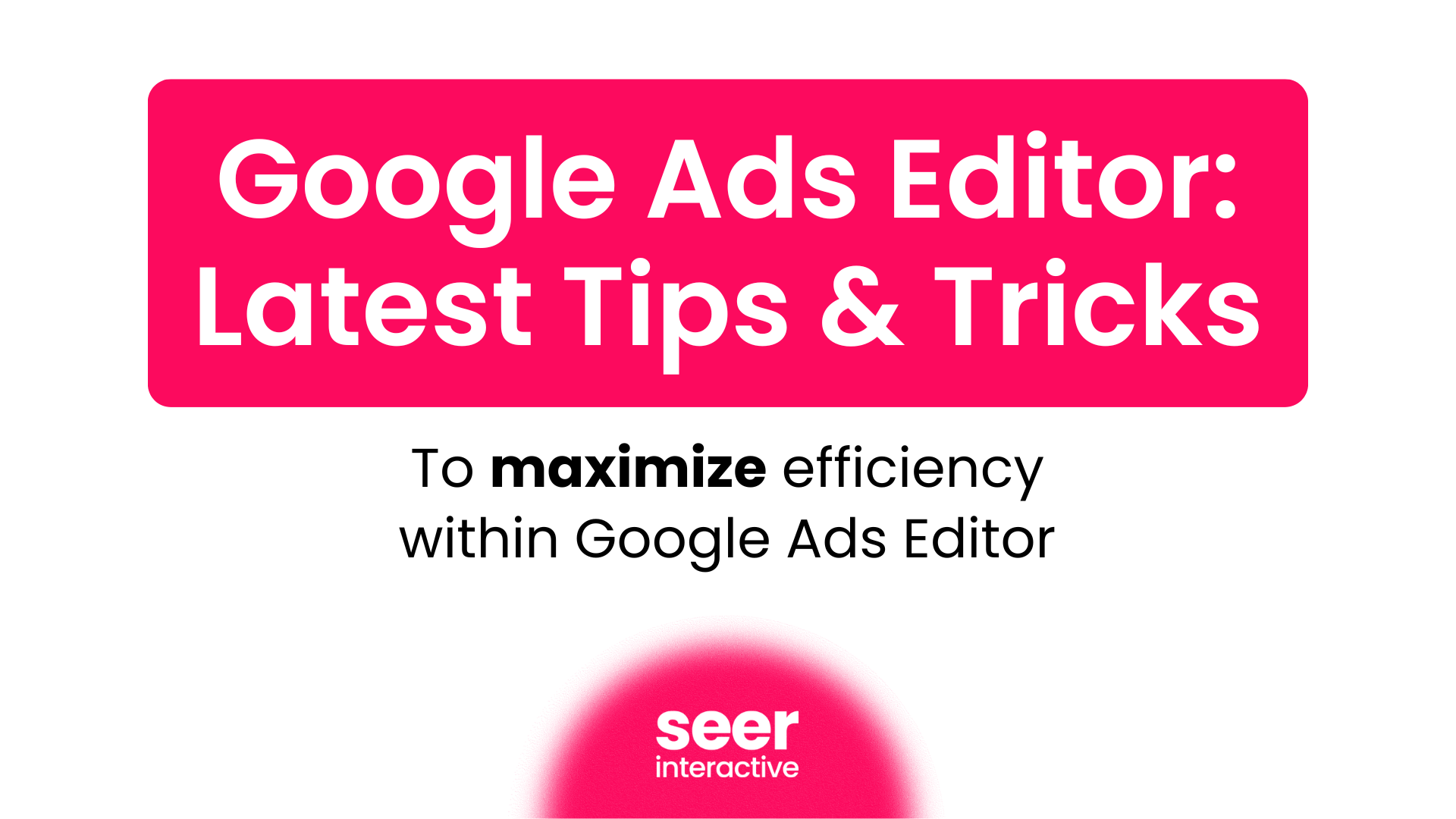One of the most common questions we get from Clients is,
How do we integrate PPC, SEO, and Analytics?
The word is out that SEO and PPC work better when they work together. With Analytics at the core, marketers enjoy improved outcomes and de-risk their investments.
We’ve compiled 10 recent examples of ways we’re integrating SEO, PPC and Analytics and driving success for our Clients. We hope that these examples start to answer the “integration question” and inspire you to try some new strategies within your organization to integrate these services.
Looking for more advanced ways to integrate PPC and SEO data together?
1. Increase Clicks and Conversions
Analyze top performing PPC AdCopy to learn what copy generates clicks and conversions. Run multivariate tests, incorporating high performing ad copy into metadata to improve organic click through rates and conversions. Certain messaging will resonate differently with various audience segments.
The more well defined these audience segments are, the better you can quantify their value and determine if they are qualified targets. Leverage Analytics to correlate messaging with user behavior and build out audience segments. Want to see this in action? Check out our most recent SEO/PPC integration case study here.
2. Improve User Experience
The On-Site Search Report is a goldmine for identifying content gaps and improving user experience. This report will shed light on the things that users are searching for on your site and not finding. Once you identify the things that people are looking for when they are on your website, run tests by bidding on related keywords and infusing those keywords and themes into your landing pages.
If you have a complex search function on your website, you can implement custom tracking to perform an in-depth analysis of how people are using your website search feature. Custom tracking provides insight into potential friction points on your website that could be hindering conversions.
3. Target Competitor’s Keywords
Use the PPC Auctions Insights Report to identify the queries your competitors are bidding on. Test them in PPC and then review your PPC query report to see which are converting. Prioritize top converting keywords in organic search and target them with relevant and valuable content, but don’t forget about keywords that assist conversions. Use Analytics to group users by the keywords they visited from, their intent, and where they are in the purchase funnel.
Once you have a measurement strategy in place, you can identify the content that people are engaging with prior to conversion, run display and send people to that content, and then remarket to them and send them to the subsequent stage of the funnel.
The PPC Auctions Insights Report will also show you where competitors are likely to exhaust their resources in the future. This enables you to go after queries organically with lower barrier to entry.
If you are a corporate startup and not sure how you should position your business to perform in search, you can leverage the PPC Auctions Insights Report as well.
4. Enable Strategic CRO Testing
Sometimes, it makes sense to send PPC traffic to regular pages on your site versus PPC specific landing pages. Use the Landing Page Conversion Rate Report to optimize general site pages for conversion. This will positively impact conversions across the board, no matter which channel a user comes from. Form hypotheses, execute tests, measure outcomes and repeat.
Tools like CrazyEgg, Google Analytics, Inspectlet, Optimizely, Google Optimize/Optimize 360 can be incredibly helpful when executing these types of CRO tests. With Optimize 360, you can target specific users for your tests using Google Analytics audiences. Audiences can be pushed just as they are to AdWords to remarket to and target lookalike audiences! Double win!
5. Score and Prioritize Users Based on Behavior
Interview members of your target audience to understand their needs, motivators and behaviors. Then, feed the qualitative data that you gather into your SEO content, PPC campaigns and Analytics strategy.
Once you’ve created the content, use PPC to validate, or disprove, your assumptions. Once you‘ve validated your assumptions, define the actions that qualified users take and give those actions values. This way, you can score users based on their actions and prioritize them accordingly. Google Analytic’s custom dimension functionality allows you to “save” these scores over multiple sessions for each user so you can analyze and find cohorts based on data.
6. Reduce Paid Advertising Costs
Often times, companies are looking to invest in SEO to offset PPC costs. As long as AdWords and Google Search Console are linked, the Paid and Organic Report will show you statistics on where your website is showing up and associated performance.
If you see that you have a very strong SEO presence for high cost keywords, you might consider a test pulling back PPC spend. Watch CTR, traffic and conversions carefully during these tests to ensure you’re not cutting off a lifeline. Studies have shown that having both an organic result and paid ad show up together can improve outcomes.
If you have a high volume of clicks and impressions from keywords for which you have no SEO presence, take notice. These could be irrelevant queries that are wasting your ad dollars. At Seer, we use a proprietary software called Saving Benjamin that perfoms this SEO and PPC analysis to find keywords to negate. That's why every member of our PPC team is trained in performing PPC Efficiency Audits that leverage this tool.
7. Prioritize Google My Business Optimization
Location Extensions send users to your Google My Business (GMB) page. One way to prioritize which locations to begin optimizing for organic search is to use the Location Extension Clicks Report. Use this report to identify which locations are getting the most clicks and then prioritize them accordingly. Be sure to use UTM tags in your GMB profile URLs so that you can measure improvements and justify the investment!
8. Improve Content Promotion Outcomes
When content aligns with what an audience is interested in, they are much more likely to engage with it when they see it. For example, if you promote content on social that is in high demand, you might get more clicks and conversions. Promoting audience-centric content created for SEO may improve your results.
Be sure to set goals and have a strategic promotion plan upon execution. Use Analytics to understand how content plays a role in the path to conversion. For example, a person may find your site via paid content promotion, then visit the site again via Organic search and finally return to convert at a later time via a Social ad.
9. Develop Referral Partnerships
It is critical to be able to articulate what a qualified visitor looks like (see #5 on scoring users based on behavior), beyond simply conversion. Develop your definition of what a qualified user looks like. Then, analyze the Display (Placement) Report to identify websites that are driving qualified traffic to your site. Prioritize those sites for organic outreach, promotion and referral partnerships.
10. Increase Local SEO Traffic
Local pack results are largely based on the searcher's location. Because of this it may be tough to appear in the local pack for a searcher who is not within a certain distance of your business location.
In areas you serve that are further away from your physical location, you can take a look at the Local Pack Visibility Report and run Local Pack Ads. This way you have visibility in the local pack where it may be difficult to show up locally. Watch conversions closely to make sure these users are converting.
Sharing data and integrating across divisions will help you improve the outcomes of your marketing efforts. Have you ever tried any of these strategies yourself? Got more ideas? We’d love to hear from you in the comments section!
Big shout out to a few of our integration pioneers, Scott Taft, MaryCate Muschett, Kyle Lambert, Kati Polaski, Christina Miazgowicz and Paige Flanagan for helping compile the examples in this post.


